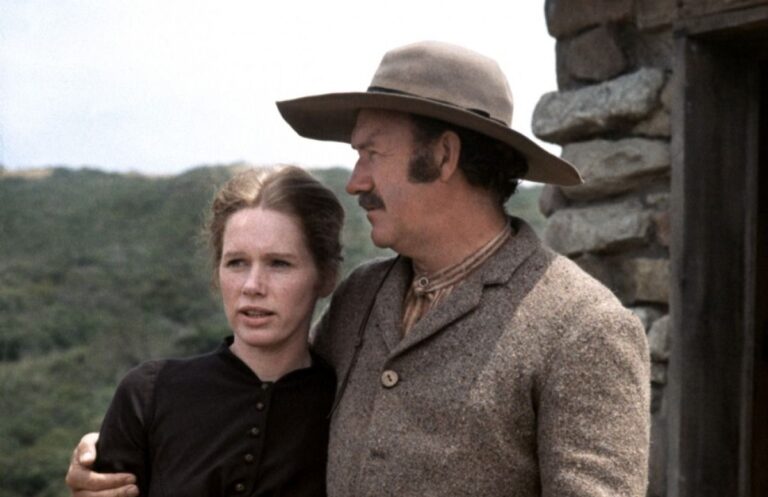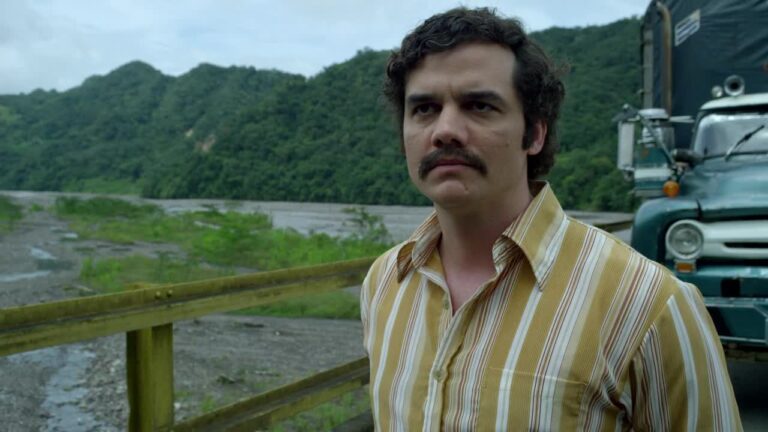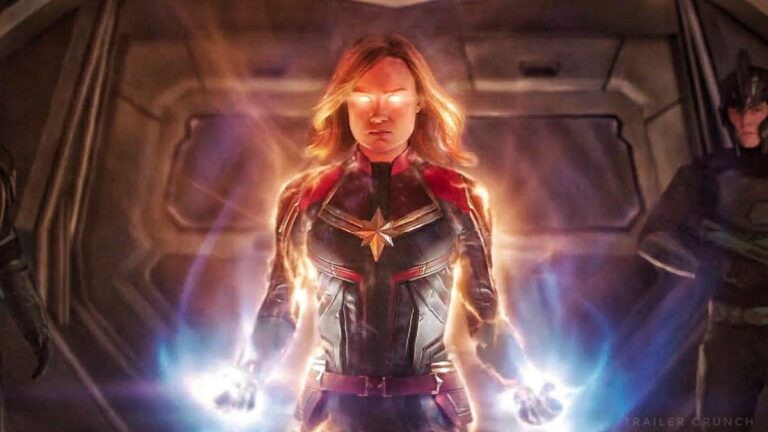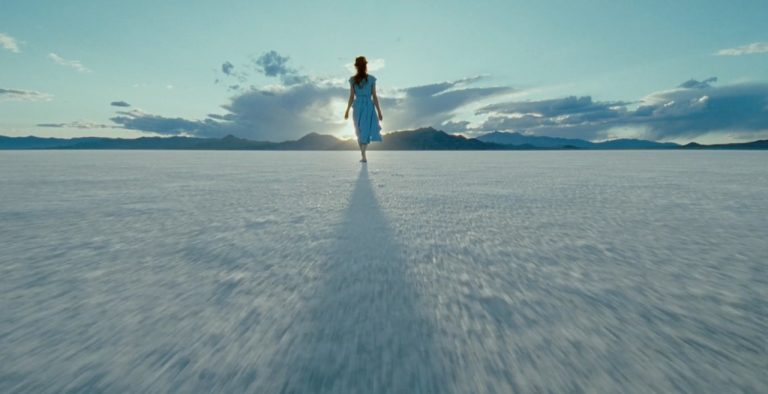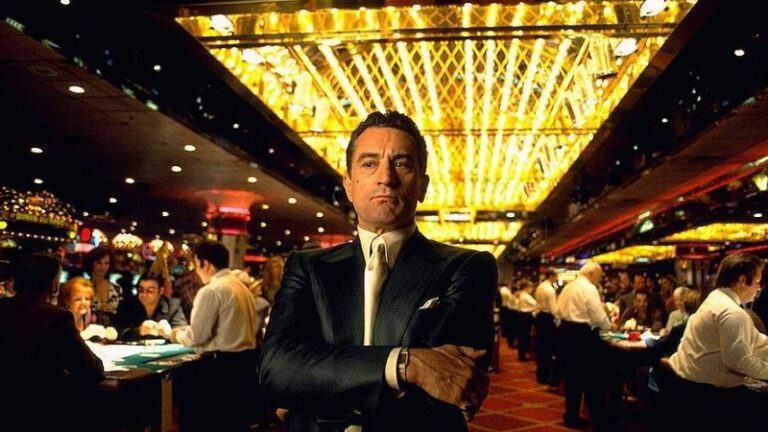Movies That Start With F: Alphabetical Adventures in Cinema
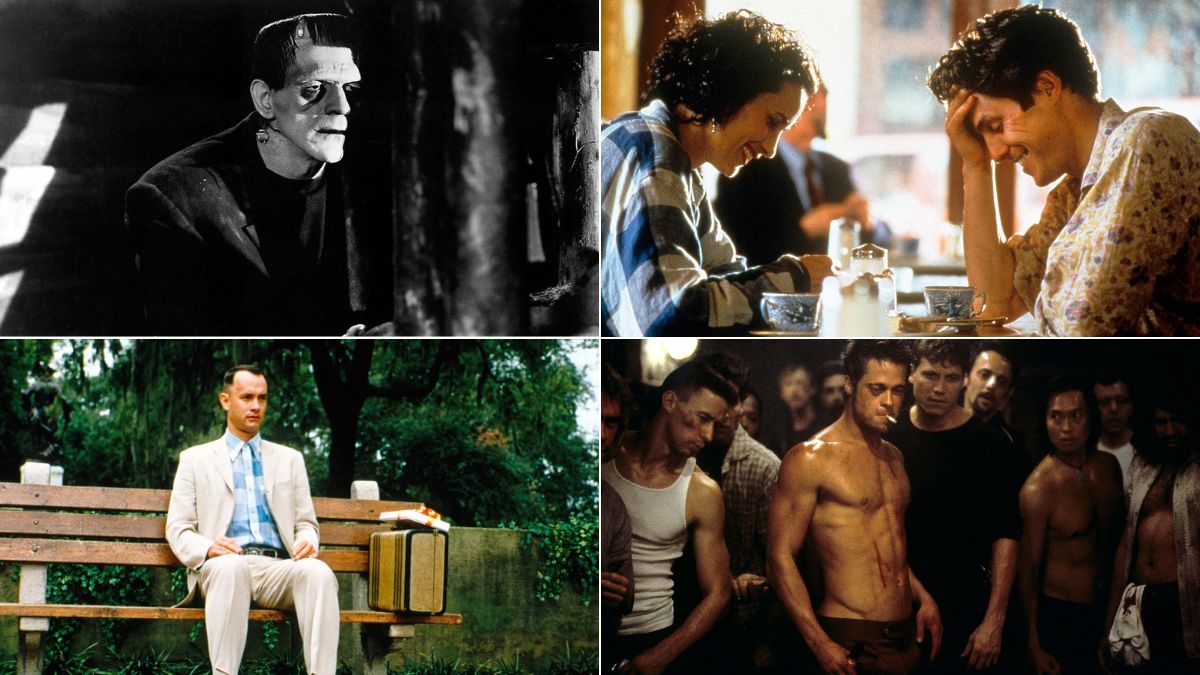
Diving into the vast ocean of cinema often feels like an endless exploration, with treasures waiting at every depth. As we journey alphabetically through the world of films, we arrive at the letter “F”. This brings us a plethora of cinematic gems that range from the fantastical to the frightful, the funny to the profound. Join us as we embark on this adventure and explore 20 movies that start with the letter “F”.
Fahrenheit 451 (1966)
In 1966, François Truffaut brought to the screen a cinematic adaptation of Ray Bradbury’s dystopian novel, “Fahrenheit 451.” The film delves into a totalitarian society where books are banned and “firemen” burn any that are found. Through its stark imagery and powerful narrative, it addresses themes of censorship, freedom of expression, and the human soul’s innate need for knowledge and understanding.
Central to the story is the fireman Guy Montag, who begins to question the morals of his job, setting him on a rebellious path. Truffaut’s choice to portray a world without written word is a poignant reminder of the value and power of literature, and how it shapes our consciousness and culture.
Throughout the film, Montag’s transformation from obedient fireman to a man in search of truth paints a compelling portrait of awakening. The movie’s title, “Fahrenheit 451,” refers to the temperature at which paper burns, symbolizing the fragility of knowledge in the face of oppressive power.
Cinematography, sound design, and strong performances, especially from Oskar Werner as Montag, collectively craft a world both chilling and thought-provoking. It’s a stark warning of what society could become if it lets go of its foundational values, especially the freedom to think, learn, and challenge.
Fargo (1996)
Set against the bleak and snowy landscapes of Minnesota, the Coen Brothers’ 1996 black comedy crime film, “Fargo,” presents a tale of crime, deception, and the human capacity for both folly and malevolence.
When Jerry Lundegaard, a car salesman with deep financial woes, orchestrates the kidnapping of his wife in hopes of extracting a hefty ransom from his wealthy father-in-law, he inadvertently sets into motion a series of darkly comedic and tragic events. The film masterfully balances moments of dark humor with tense, suspenseful sequences, showcasing the Coens’ unique storytelling style.
At the center of “Fargo” is Marge Gunderson, the pregnant police chief, played brilliantly by Frances McDormand in an Oscar-winning performance. Gunderson’s investigation of the crimes and her interactions with the quirky denizens of the region offer both a study of Midwestern politeness and a deeper commentary on the human condition.
The film, with its iconic characters, quotable dialogue, and unforgettable scenes, solidified the Coen Brothers’ status as masters of their craft, blending the boundaries between crime, comedy, and drama in ways few filmmakers can.
Fast Times at Ridgemont High (1982)
Amy Heckerling’s 1982 coming-of-age comedy, “Fast Times at Ridgemont High,” provides a candid and often humorous look into the lives of teenagers navigating high school in Southern California. Based on Cameron Crowe’s book, who went undercover as a high school student, the film showcases the angst, aspirations, and escapades of its young protagonists.
With its iconic characters, from the perpetually stoned Jeff Spicoli to the ambitious Brad Hamilton, the movie encapsulates the zeitgeist of early ’80s youth culture.
Beyond the comedic surface, “Fast Times” addresses more profound issues like love, loss, and the challenges of transitioning from adolescence to adulthood. Its nuanced portrayal of teenage relationships, sexual experiences, and the pressures of growing up makes it resonate with audiences even decades later.
With a stellar ensemble cast that includes Sean Penn, Jennifer Jason Leigh, and Judge Reinhold, the film stands as a timeless testament to the complexities of teenage life.
Fatal Attraction (1987)
Adrian Lyne’s 1987 psychological thriller “Fatal Attraction” delves into the perilous consequences of infidelity, obsession, and deceit. Michael Douglas stars as Dan Gallagher, a successful lawyer who engages in a weekend affair with Alex Forrest, played by Glenn Close, while his family is away.
What initially seems like a fleeting escapade quickly spirals into a nightmarish ordeal when Alex becomes dangerously obsessed with Dan, refusing to let him go. The film’s intense storyline, combined with stellar performances, particularly by Close, turned “Fatal Attraction” into a cultural phenomenon.
While on the surface, it’s a chilling tale of obsession gone awry, the film also explores deeper themes of marital fidelity, responsibility, and the societal expectations placed on women. Glenn Close’s portrayal of Alex is especially noteworthy, as it challenges conventional stereotypes of female behavior and desires, leading to broader conversations about mental health and societal norms.
The film’s most iconic moments, such as the boiled bunny scene, continue to haunt audiences, making “Fatal Attraction” a quintessential psychological thriller of its time.
Fight Club (1999)
David Fincher’s “Fight Club,” based on Chuck Palahniuk’s novel of the same name, remains one of the most iconic and controversial films of the late ’90s. At its core, it’s a scathing critique of consumer culture, the disillusionment of modern masculinity, and the inherent violence of human nature.
Edward Norton portrays the film’s unnamed protagonist, a disillusioned white-collar worker who forms an unlikely bond with the charismatic yet enigmatic Tyler Durden, played by Brad Pitt. Together, they create Fight Club, an underground movement where men come to unleash their frustrations and reclaim their primal instincts.
However, as the club evolves into the anarchic Project Mayhem, the film takes darker, more surreal turns. Fincher’s meticulous direction, combined with Palahniuk’s provocative narrative, offers a deep exploration of identity, society’s constraints, and the duality of human nature.
“Fight Club” is as much a psychological journey as it is a societal commentary. Its final twist, memorable quotes, and visual style have solidified its status as a cult classic. The movie’s central message, challenging viewers to question their values, desires, and the very fabric of their existence, ensures its enduring relevance in cinematic history.
Finding Nemo (2003)
Andrew Stanton’s animated masterpiece, “Finding Nemo,” produced by Pixar Animation Studios, plunges audiences into the vibrant and perilous world of the Great Barrier Reef. The narrative follows the journey of Marlin, an overly cautious clownfish, as he embarks on an epic quest to find his son, Nemo, who’s been captured by a scuba diver and placed in a fish tank in a dentist’s office.
As Marlin ventures into the vast ocean, he encounters various marine creatures, from the forgetful yet endearing Dory to a group of rehabilitated sharks. These encounters beautifully juxtapose the wonders and dangers of the underwater world while emphasizing themes of parental love, trust, and the process of letting go.
“Finding Nemo” isn’t just a visually stunning animation; it’s a heartwarming tale that resonates with audiences of all ages. Its universal themes of perseverance, resilience, and the unbreakable bonds of family make it a touching cinematic experience.
The film’s meticulously crafted animation, combined with a compelling narrative and memorable characters, underscores Pixar’s reputation for creating poignant stories that leave a lasting impact. Moreover, the film has sparked an increased interest in marine biology among children, illustrating its far-reaching influence beyond the realm of cinema.
Forrest Gump (1994)
Robert Zemeckis’ “Forrest Gump” stands as a testament to the resilience of the human spirit and the unpredictability of life. Tom Hanks delivers an unforgettable performance as Forrest, a man with limited intellectual abilities, who unwittingly finds himself at the center of several defining moments in American history.
From teaching Elvis to swivel his hips to running across the country, Forrest’s unique perspective on life offers a blend of naivety, wisdom, and sheer luck. Through his eyes, audiences experience the joys, heartbreaks, and social transformations of the latter half of the 20th century.
The film masterfully intertwines historical footage with fiction, crafting a narrative that is as much about American cultural and political history as it is about Forrest’s personal journey. More than just a tale of one man’s adventures, “Forrest Gump” delves into themes of destiny, love, and the idea that everyone, regardless of their abilities, can make a significant impact on the world.
Its iconic quotes, memorable characters, and blend of humor and poignancy have cemented its place in cinematic history, making it a touching and inspirational tale that continues to resonate with audiences worldwide.
Four Weddings and a Funeral (1994)
“Four Weddings and a Funeral,” directed by Mike Newell and penned by Richard Curtis, captures the comedic and poignant intersections of love, friendship, and commitment. Set amidst the backdrop of four weddings and a funeral, the film chronicles the romantic escapades of Charles, played by Hugh Grant, as he grapples with his feelings for an American woman, Carrie, portrayed by Andie MacDowell. The movie’s episodic structure allows for a deep dive into the characters’ lives, their relationships, and the societal expectations surrounding marriage.
The film’s enduring charm lies in its genuine depiction of the uncertainties of love, paired with witty dialogue and an ensemble cast that exudes chemistry. Curtis’ screenplay balances humor with moments of heartfelt emotion, capturing the complexities of human relationships.
Its success lies not just in its romantic narrative but in its celebration of friendship, the ties that bind, and the idea that love is unpredictable and often comes when least expected. With its memorable moments and iconic rain-soaked confession, “Four Weddings and a Funeral” remains a cornerstone of romantic comedies.
Foxcatcher (2014)
Bennett Miller’s “Foxcatcher” offers a dark and gripping exploration of ambition, wealth, and the complexities of the human psyche. Based on true events, the film delves into the relationship between John du Pont, an eccentric millionaire with a passion for wrestling, and Mark Schultz, an Olympic gold medalist grappler.
Steve Carell’s transformative portrayal of du Pont is both chilling and compelling, revealing a man driven by a desperate need for validation and recognition. On the other hand, Channing Tatum’s portrayal of Schultz underscores the vulnerabilities and pressures of an athlete striving to outshine his past achievements.
The film’s slow-burning narrative is punctuated with moments of intense drama, expertly capturing the escalating tension between its central characters. Through its stark cinematography and meticulous direction, “Foxcatcher” paints a haunting portrait of the dangerous intersections of pride, legacy, and mentorship.
The sprawling du Pont estate, where much of the movie is set, becomes a character in itself, symbolizing the isolation, power dynamics, and the underlying menace that permeates the narrative. Through this tragic tale, the film offers a meditation on the American dream, its promises, and its disillusionments.
Frances Ha (2012)
Noah Baumbach’s “Frances Ha” is a black-and-white ode to ambition, friendship, and the trials and tribulations of young adulthood in New York City. Greta Gerwig shines as Frances, a spirited yet directionless aspiring dancer navigating the complexities of personal and professional growth.
The film, co-written by Gerwig and Baumbach, beautifully captures the essence of a generation caught between aspirations and reality. With its snapshot scenes and quick-witted dialogue, “Frances Ha” evokes the ebbs and flows of life in one’s late twenties, marked by fleeting joys, disappointments, and the undying optimism of youth.
One of the film’s most poignant themes is the evolution of friendship. As Frances grapples with the changing dynamics of her relationship with her best friend, Sophie, the narrative delves into the bittersweet nature of growing apart. Baumbach’s direction, combined with Gerwig’s authentic portrayal of Frances, creates a film that feels both deeply personal and universally relatable.
Its charm lies in its honesty, capturing the beautiful messiness of life, the moments of uncertainty, and the undying hope for a brighter future. “Frances Ha” stands as a love letter to dreamers everywhere, reminding viewers of the beauty in imperfection.
Frankenstein (1931)
James Whale’s 1931 adaptation of Mary Shelley’s “Frankenstein” is a pioneering work in the realm of horror cinema. This Universal monster classic introduced audiences to the tormented figure of Dr. Henry Frankenstein, brilliantly portrayed by Colin Clive, who becomes consumed with the idea of reanimating the dead. This obsession leads to the creation of the iconic Monster, an unforgettable role played by Boris Karloff, who, despite his grotesque appearance and initial violent outbursts, evokes deep sympathy due to his innate desire for acceptance and the tormented existence he never asked for.
The film’s exploration of the dangers of unchecked ambition and the ethical boundaries of science make it as thought-provoking as it is chilling. Whale’s atmospheric direction, combined with the groundbreaking makeup effects on Karloff’s Monster, ensured “Frankenstein” was not just a commercial success but also a foundational film in the horror genre. The movie’s influence is evident in numerous subsequent adaptations and its central message: the consequences of playing god and the inherent human desire for love and understanding, remains timeless.
Frida (2002)
Julie Taymor’s “Frida” paints a vivid portrait of the tumultuous life of the iconic Mexican artist Frida Kahlo. With a captivating performance by Salma Hayek, the film delves deep into Frida’s passionate relationships, her enduring physical pain following a tragic bus accident, and her revolutionary artistic spirit. Kahlo’s vibrant and surrealistic paintings come to life on screen, offering insight into her innermost feelings, her experiences, and her indomitable spirit. The movie doesn’t shy away from exploring her complex relationship with fellow artist Diego Rivera, played by Alfred Molina, and her encounters with various historical figures, including Leon Trotsky.
Beyond its biographical approach, “Frida” serves as a celebration of art, resilience, and the defiance of societal norms. Taymor’s direction, combined with Elliot Goldenthal’s evocative score, ensures the film resonates with the colorful and passionate essence of its subject. “Frida” is more than just a recounting of the artist’s life; it’s a testament to the power of art to heal, inspire, and immortalize.
Friday (1995)
“Friday,” directed by F. Gary Gray and co-written by Ice Cube and DJ Pooh, is a cult classic comedy that provides a humorous glimpse into the lives of two friends, Craig (Ice Cube) and Smokey (Chris Tucker), as they navigate a typical Friday in their South Central Los Angeles neighborhood.
The film is notable for its comedic take on everyday situations, from dealing with neighborhood bullies to the dynamics of family life. Chris Tucker’s portrayal of Smokey, a small-time pot dealer, is especially memorable, and his comedic timing, paired with Ice Cube’s grounded performance, ensures the film remains a staple of 90s comedy.
What makes “Friday” unique is its ability to weave humor with poignant moments of reflection on urban life, familial bonds, and personal responsibility. While the movie revels in its light-hearted antics, it also touches upon the challenges and nuances of life in South Central LA, offering a balanced portrayal that resonates with audiences.
Its cultural impact, memorable quotes, and authentic representation of urban life ensure that “Friday” remains relevant and beloved decades after its release.
Fried Green Tomatoes (1991)
Based on the novel “Fried Green Tomatoes at the Whistle Stop Cafe” by Fannie Flagg, “Fried Green Tomatoes” is a poignant tale that interweaves the stories of two women in the 1980s with memories of two women in Depression-era Alabama. Directed by Jon Avnet, the film explores themes of friendship, love, aging, and the power of stories.
As Evelyn Couch, played by Kathy Bates, listens to the elderly Ninny Threadgoode, portrayed by Jessica Tandy, recount tales of the spirited Idgie Threadgoode and the gentle Ruth Jamison, she finds inspiration to transform her own life.
“Fried Green Tomatoes” is a celebration of the enduring bonds of female friendship. The on-screen chemistry between Mary Stuart Masterson (Idgie) and Mary-Louise Parker (Ruth) encapsulates the strength, depth, and complexity of their relationship.
Set against the backdrop of the Southern United States, the narrative is rich with regional flavors, both cultural and culinary. The film delicately touches upon issues of racism, domestic abuse, and societal expectations, making it a heartfelt and thought-provoking cinematic experience that lingers long after the credits roll.
Friends with Benefits (2011)
In “Friends with Benefits,” director Will Gluck offers a modern twist on romantic comedies, exploring the complexities of modern relationships. The film centers on Jamie (Mila Kunis) and Dylan (Justin Timberlake), two individuals who, after being jaded by previous romantic relationships, decide to embark on a purely physical relationship without the emotional strings attached.
Set against the vibrant backdrop of New York City, the film dives into their evolving friendship and the inevitable complications that arise when physical intimacy blurs the lines of their initially well-defined arrangement.
While the premise might seem familiar, “Friends with Benefits” stands out for its sharp wit, endearing characters, and its commentary on the evolving nature of relationships in contemporary society. Kunis and Timberlake share undeniable chemistry, making their characters’ journey both believable and engaging.
The film delves into themes of vulnerability, the fear of commitment, and the age-old question of whether men and women can maintain a platonic relationship. Through humor and heart, “Friends with Benefits” examines the nuances of love and friendship in the 21st century, reminding viewers of the unpredictable nature of the human heart.
Fright Night (1985)
In Tom Holland’s “Fright Night,” 1985 saw the blending of classic vampire lore with the flair of 80s horror. The story follows Charley Brewster, a teenager with an avid passion for horror films, who becomes convinced that his enigmatic next-door neighbor, Jerry Dandrige, is a vampire. As Charley delves deeper into his suspicions, the lines between his beloved horror movies and the horrifying reality he faces begin to blur. The film brilliantly plays on the anxieties of its central character, leading to a thrilling game of cat and mouse between the young protagonist and the suave, yet menacing vampire. Holland’s deft direction ensures that while “Fright Night” indulges in its campy moments, it never loses its grip on genuine suspense.
Beyond the horror, “Fright Night” is also a coming-of-age tale. Charley’s journey from a boy with an overactive imagination to a young man confronting real-life terrors symbolizes the broader transition from adolescence to adulthood. The film cleverly juxtaposes the mundane struggles of teenage life with supernatural horrors, underlining the idea that sometimes the monsters we imagine can be as terrifying as the ones that exist in reality. “Fright Night” remains a beloved classic in the vampire genre, offering a unique blend of horror, humor, and heart.
From Dusk Till Dawn (1996)
“From Dusk Till Dawn,” directed by Robert Rodriguez and penned by Quentin Tarantino, is a genre-bending thrill ride that seamlessly transitions from a crime drama into a full-blown vampire horror. The narrative follows the Gecko brothers, notorious criminals on the run, who, after kidnapping a family, find themselves in a remote Mexican bar waiting for their contact.
However, they soon discover that the bar is infested with vampires, leading to a night of intense survival. With its sharp dialogue, memorable characters, and visceral action sequences, the film stands out as a unique fusion of Tarantino’s narrative style and Rodriguez’s dynamic direction.
What makes “From Dusk Till Dawn” particularly engaging is its unpredictability. The sudden genre shift is both jarring and exhilarating, catching the audience off guard and enhancing the film’s overall tension.
Beyond the surface-level action and horror, the movie delves deep into themes of redemption, family, and the duality of human nature. With a cast led by George Clooney, Quentin Tarantino, Harvey Keitel, and Juliette Lewis, “From Dusk Till Dawn” remains a cult classic, celebrated for its audacity, wit, and unapologetic embrace of cinematic excess.
Frozen (2013)
“Frozen,” directed by Chris Buck and Jennifer Lee, emerged as a cultural phenomenon in 2013, redefining the landscape of animated musicals. The tale of two royal sisters, Elsa and Anna, separated by Elsa’s magical powers over ice and snow, resonated deeply with audiences worldwide. At its heart, “Frozen” is a story of familial love, self-acceptance, and empowerment.
Songs like “Let It Go” became anthems of self-expression, capturing the essence of Elsa’s journey from fear and isolation to liberation and self-acceptance. The film’s narrative, while rooted in fairy tale traditions, offers a fresh take, particularly with its emphasis on the bond of sisterhood over romantic love.
Visually stunning and musically captivating, “Frozen” showcased Disney’s ability to evolve with its audience. Its nuanced characters, particularly the conflicted Elsa and the spirited Anna, provided depth and relatability, making them instant favorites among both children and adults.
Themes of isolation, fear of one’s own power, and the need for connection give the film a universal appeal. With its memorable soundtrack, compelling narrative, and groundbreaking animation, “Frozen” stands as a testament to Disney’s enduring magic and its ability to create timeless tales for a new generation.
Full Metal Jacket (1987)
Stanley Kubrick’s “Full Metal Jacket” is a haunting exploration of the Vietnam War and the psychological toll of combat. The film is distinctly divided into two parts: the brutal basic training at Parris Island and the horrors of urban warfare during the Tet Offensive.
Through the lens of Private Joker, portrayed by Matthew Modine, Kubrick delves into the dehumanizing process of turning young men into soldiers. The film’s first half, dominated by the menacing presence of Drill Instructor Gunnery Sergeant Hartman, memorably played by R. Lee Ermey, is a raw portrayal of the physical and psychological breakdown of recruits.
In the latter part of the film, set in Vietnam, Kubrick masterfully depicts the chaos, absurdity, and brutality of war. The sharp contrast between the regimented training environment and the unpredictable nature of combat emphasizes the dissonance between military indoctrination and the grim realities of warfare.
“Full Metal Jacket” is more than just a war film; it’s a meditation on the nature of violence, the duality of man, and the profound impact of dehumanization. Kubrick’s meticulous direction, combined with a powerful script and memorable performances, ensures that the film remains a poignant and disturbing reflection on the complexities of war.
Funny Girl (1968)
William Wyler’s “Funny Girl” is a musical tour de force that chronicles the life of Fanny Brice, the iconic Broadway star, and her tumultuous relationship with gambler Nicky Arnstein. Barbra Streisand’s Oscar-winning portrayal of Brice is nothing short of captivating, capturing the performer’s wit, vulnerability, and undeniable talent.
From the opening number, it’s clear that “Funny Girl” is a showcase for Streisand’s vocal prowess and comedic timing. Songs like “People” and “Don’t Rain on My Parade” not only highlight her vocal range but also serve as poignant reflections of Brice’s journey from an aspiring performer in New York’s Lower East Side to a Ziegfeld Follies star.
Yet, beyond its musical splendor, “Funny Girl” is a deeply emotional narrative, touching upon themes of love, ambition, and the cost of fame. The film’s portrayal of Brice’s relationship with Arnstein, played by Omar Sharif, is layered and complex, oscillating between moments of passion and profound heartbreak.
Through its stunning musical numbers, compelling narrative, and Streisand’s star-making performance, “Funny Girl” solidified its place as a classic in the pantheon of great musicals. It remains a testament to the timeless allure of Broadway, the complexities of love, and the indomitable spirit of its central character.
MORE FROM VOICE FILM


